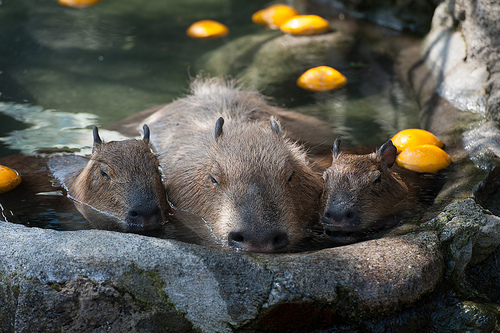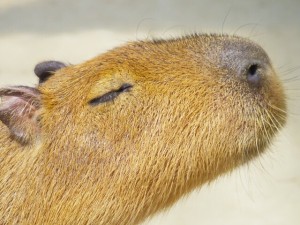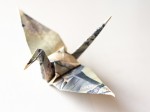Capybara | Why these onsen-loving animals are the best thing ever

What are some popular animals in a zoo? People will be quick to name off lions, pandas, elephants, or tigers. Among them, an animal that is gaining popularity is the capybara. It’s even been turned into a cartoon character.

So what is a capybara?
The capybara is a large and fat rodent measuring 1.1 to 1.3m from nose to the bottom, 50 to 62cm from the ground to the shoulder, and weighing 45kg on average. Upon first look it is often mistaken for a pig, but it is actually a rodent, a relative of rats. The capybara is the largest rodent in the world and its Japanese name is Oni Tenjiku Nezumi (a demon guinea pig). The capybara inhabits grasslands near a river bank or marshy areas, from Panama to northeast Argentina.
The capybara’s large body is covered with thick, hard hair. The hair is as hard as ones found on a scrubbing brush, and grows sparsely so that its skin can be seen between the hair. On the contrary, young capybara are covered in soft, short hair. The capybara lack a tail unique to rodents, and have four short legs. The forelegs are shorter than the hind ones. The capybara is good at swimming, has four fingers on the forelegs and three on the hind ones, and has small webs between fingers.
The lifespan of wild capybara is 5 to 10 years and those in captivity can live longer than 10 years.
The name, capybara, comes from Guarani language of the Tupi tribe in South America; it means the “conqueror of savanna.” Capybaras are ugly from some angles – a big nose, big nostrils, small ears and eyes. But with very long eyelashes it could be very cute. In Japan, the term Busakawaii (ugly cute) became popular a while back – and along with the trend, the capybara became popular. After all, how could you hate that face!

And these capybara, they love the hot spring! In winter a hot tub is installed in the capybara cage in the zoo – many people visit to witness this sight. How did the capybara learn to take baths – it’s not even from Japan!
The capybara is native to the tropics and hates cold places. But in Japan it gets very cold from fall to winter. And their skin gets dry in winter. The zoo keeper thought of giving them a bath. But at first the capybaras hesitated to bathe in the hot spring thinking the water would be cold. Then the keeper floated vegetables (like their favorite – cabbages!) in the hot spring. Owing to such an effort, Japanese capybaras learned to love hot springs. The sight of capybaras taking a hot spring is really cute and soothing, isn’t it?
There are many zoos that have a hot spring in various places in Japan, so I really recommend going there!
Photo by Koji Ishii, さかな, mimi











